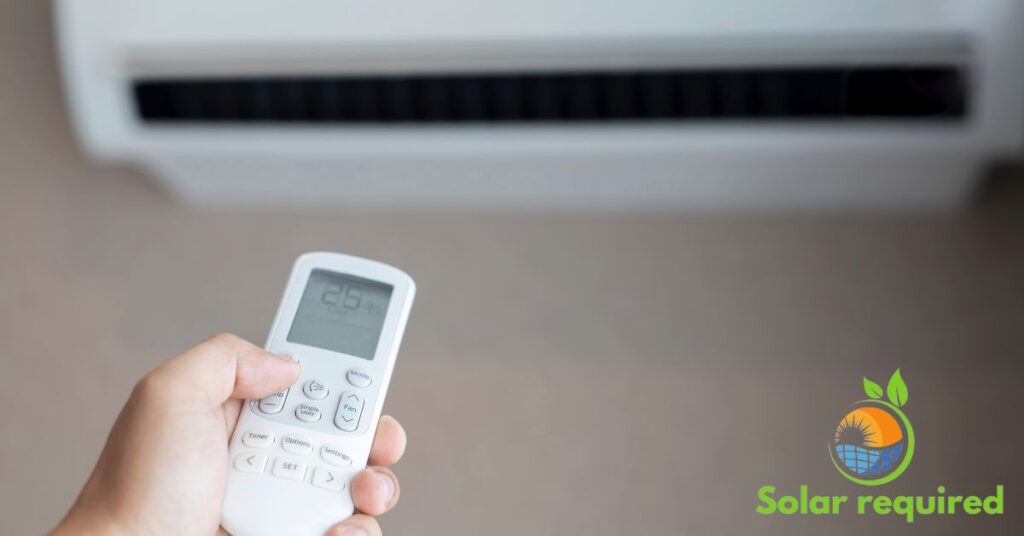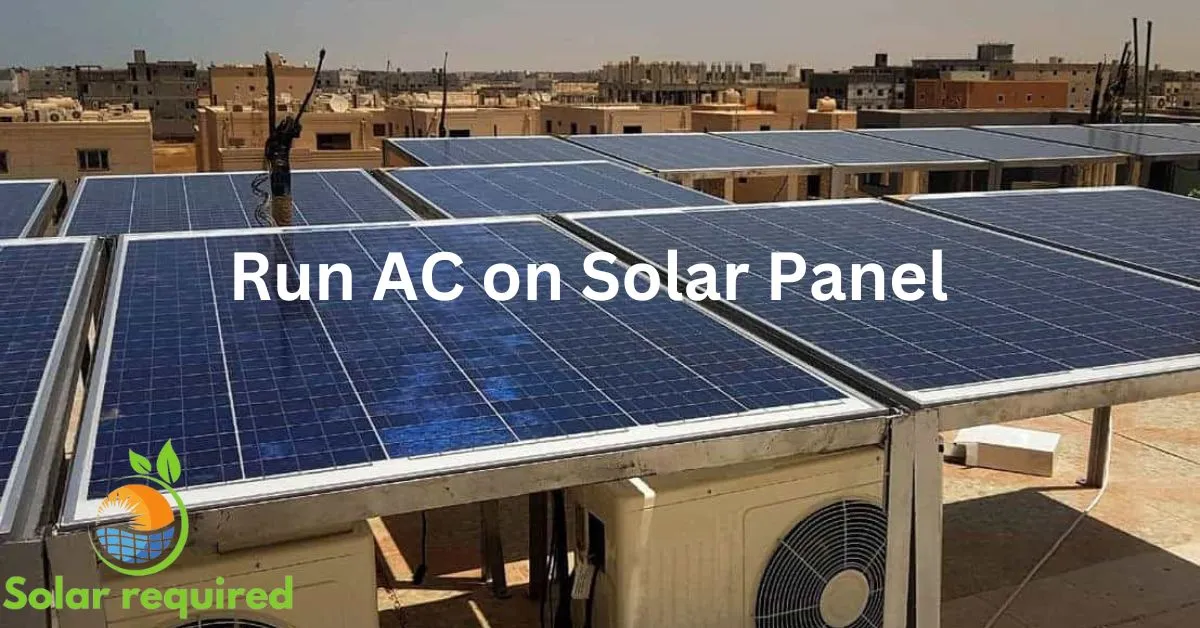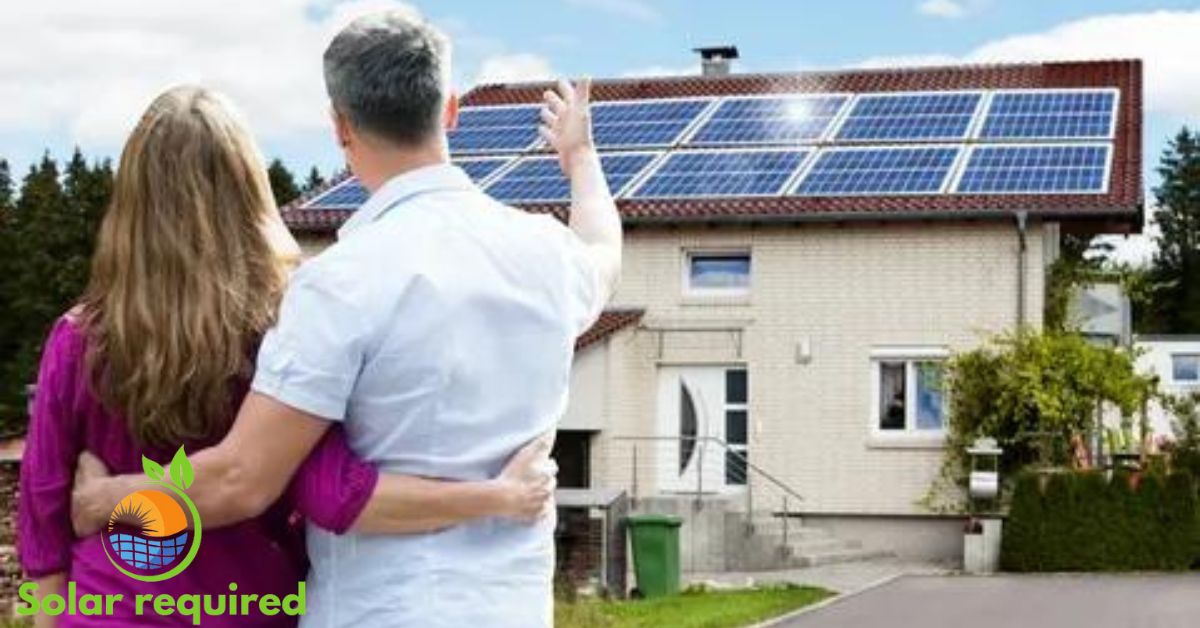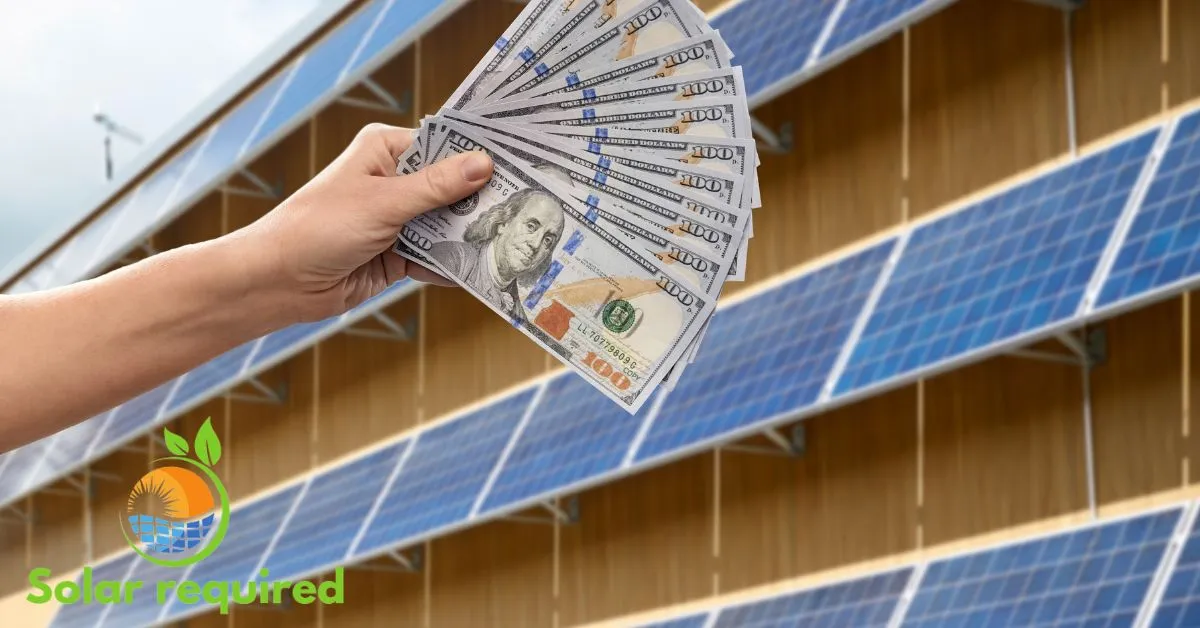In this post, I will tell you how to run an AC on solar panels. Complete details will be shared in this article, so let’s start.
How many solar panels do I need to run my AC?
| AC Unit Power (Watts) | Number of Solar Panels Required |
| 1,000 | Approximately 4-5 panels |
| 2,000 | Approximately 8-10 panels |
| 3,000 | Approximately 12-15 panels |
| 4,000 | Approximately 16-20 panels |
| 5,000 | Approximately 20-25 panels |
Remember, the number of solar panels needed can change. It depends on things like the panels’ efficiency. Also, how much sunlight your area gets and if your home needs extra power. Seeking advice from a solar specialist is also advisable. They can provide a more accurate and customized evaluation of your circumstances.
Components of a Solar-Powered AC System
It has become more desirable to use solar energy to power air conditioning (AC) units. The globe is shifting to renewable energy sources for economic and environmental reasons. However, you must understand the parts of a solar AC system. Do this before starting this quest.
The AC unit, inverters, and optional batteries are the essential components of an AC system that runs on solar energy. Sunlight is converted into electricity by solar panels. The DC electricity produced by the panels is converted into AC electricity via inverters.
This AC runs your air conditioner. Batteries allow you to store extra energy, although they are not necessary. Your photovoltaic panels function well. The energy that has been stored can be used at night or on cloudy days.
When it comes to choosing the right solar panels and inverters for your AC system, there are a few factors to consider.
Step-by-Step Guide
Finding Out How Much Energy You Need
You must determine your energy needs exactly. This is critical if you want to be sure your solar AC system can supply enough power. Determine the power usage of your air conditioner first; this is usually expressed in watts. Usually, the user handbook or the unit’s nameplate has this information. Next, figure out how many hours a day you plan to operate your air conditioner.
To find your daily energy usage in watt-hours (Wh) multiply the power by the hours. For example, your daily energy usage would be 12,000 Wh. This is if your air conditioner uses 1,500 watts and you plan to use it for 8 hours each day. Keep in mind that this is the minimum energy requirement. More energy may be needed to start the AC unit or during peak usage.
Right Solar Panels and Inverters
After you figure out how much electricity you need, you can choose the right solar panels and inverters for your solar AC. Think about the solar panels’ efficiency, or how much sunshine they can convert to power. More electricity produced by panels with higher efficiency will enable you to get the most out of your air conditioner. When choosing solar panels, there are a few factors to consider.
Install the Solar Panels and Connect Them to the AC Unit
It’s time to install the solar panels and connect them to your AC unit now that you have all the parts. Learn more about how to install solar panels with a solar system diagram. Find the best place to put the solar panels first. The rooftop of your home is a good place to put them since it gets enough sunlight there all day long. Make sure there are no structures or trees that could block the panels’ view.
Next, firmly install the solar panels using the included hardware. to guarantee that the panels are placed according to the manufacturer’s instructions and in a safe manner. Use the included wires to connect the panels to the inverters once they have been installed. Follow the wiring diagram and instructions provided by the manufacturer to avoid any electrical hazards.

After connecting the inverters to the panels, connect them to your air conditioning unit. Usually, your home’s current electrical wiring can be used for this. It’s advisable to work with a professional electrician, nevertheless, if you’re uneasy or hesitant about electrical work. They’ll guarantee a secure and reliable connection.
Monitor Your Solar-Powered AC System
Congratulations! Your solar-powered AC system is up and running. However, the journey doesn’t end here. You must monitor and maintain your system regularly. This is vital to ensure its best performance and long life.
Check your solar panels’ energy production often. Make sure they are generating the expected amount of electricity. Many solar inverters come with monitoring software. It lets you track energy production in real-time. Watch for big drops in energy production. They could mean a problem with the panels or inverters. You will need to fix it.
Read also: 5 Inverter Problems: Troubleshooting and Repair Tips
Maintain Your Solar-Powered AC System
In addition to monitoring, perform routine maintenance on your solar-powered AC system. Keep the solar panels clean and free from dust or debris that may obstruct sunlight. Inspect the wiring and connections regularly to ensure they are secure and free from damage. If you have batteries, check their charge levels. Do any needed maintenance per the manufacturer’s guidelines.
By following these steps and caring for your solar-powered AC system, you can enjoy the benefits. You can run your AC unit on clean and renewable energy.
FAQs
How many solar panels are required for a 1.5-ton AC?
The number of solar panels needed to power a 1.5-ton AC unit depends on factors such as the efficiency of the panels and the climate’s sunlight exposure. On average, it may require around 8 to 12 solar panels of standard size (around 330 watts each) to power a 1.5-ton AC unit.
Can a 3kW solar system run AC?
Yes, a 3kW solar system can usually power a 1.5-ton AC unit, given adequate sunlight and system design.
How many ACs can run on a 15 kVA solar system?
A 15 kVA solar system can typically run around 3 to 4 average-sized air conditioning units.
Conclusion
Utilizing solar energy to run an air conditioner is a great method to cut down on your carbon footprint and electricity costs. You may enjoy the comfort of cool air. You can also help the environment. To do so, be aware of the parts of a solar AC system. Estimate your energy needs, and choose the right solar panels and inverters. Remember to install the system well and keep it maintained. Why then wait? Use the sun’s power to run your AC. It’s the first step to a cheaper and greener cooling solution!


